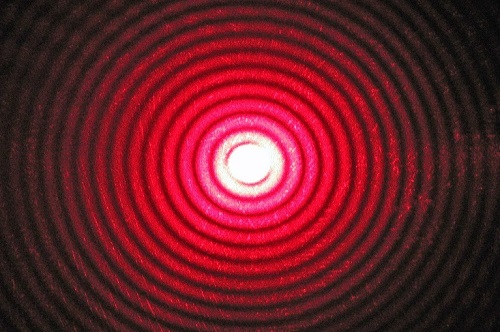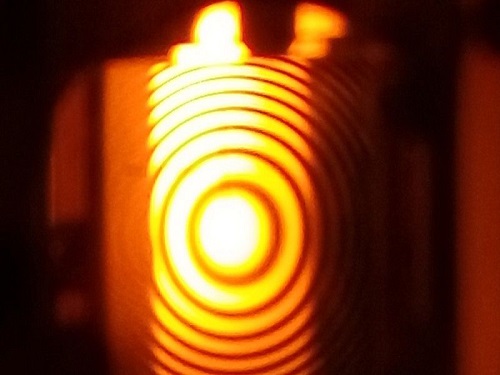Difference between Diffraction and InterferenceWaves are disturbances that travel through time and space while transferring energy. Periodic oscillations of a physical quantity, such as pressure, electric and magnetic fields, or displacement, are waves. The medium vibrates as the wave passes, but it does not move. Instead, the wave's energy is transferred from one point to another as it moves. Waves have two distinct properties: diffraction and interference.
1. DiffractionThe bending of waves around an obstacle or through an opening is known as diffraction. It occurs when a wave collides with an obstacle or a gap roughly the same size as its wavelength. The wave may spread out or interfere with itself. As a result, resulting in bright and dark areas. How light waves bend around the edges of an object is known as diffraction. For this reason, even when there isn't a clear line of sight, you can see around corners. When light travels through a small opening, like a camera's aperture or a diffraction grating's slits, diffraction can also happen. 
Diffraction of light Diffraction is not limited only to light waves; it can also occur with sound and water waves. Diffraction can be seen in many everyday situations, such as how sound waves bend around corners or how water waves spread out as they pass through a gap in a breakwater. If the obstacle or gap is much smaller than the wavelength, the wave will not diffract much and will pass through. If the obstacle or gap is much larger than the wavelength, the wave will diffract, but only slightly. Diffraction occurs only when the size of the obstacle/aperture is comparable to the wavelength of the light used. The greater the wavelength, the more pronounced the diffraction effect. It is due to this reason that the diffraction effect is very commonly observed in sound. However, suppose the obstacle or gap is approximately the same size as the wave's wavelength. In that case, the wave will diffract significantly and may interfere with itself, resulting in bright and dark areas. The diffraction pattern is determined by the shape of the obstacle or gap and the incoming wave's direction. Diffraction is an important phenomenon with many practical applications, such as in the design of antennas, optical fibers, and lenses. It is also a key factor in diffraction grating (a device used to disperse light into its component wavelengths). Factors Affecting Diffraction
In general, the number, shape, and size of the diffraction maxima and minima produced are determined by the shape of the obstacle or gap. A circular aperture, for example, will produce a diffraction pattern with a single central maximum, whereas a rectangular aperture will not.
2. InterferenceInterference between two waves occurs when two waves collide at the same location and time, which can result in the waves reinforcing each other, with the combined wave having a larger amplitude than either individual wave, or the waves canceling each other out, with the combined wave having a smaller amplitude than either individual wave. 
Interference of light Interference is classified into two types: constructive interference and destructive interference. i) Constructive Interference:It occurs when the two waves are in phase, meaning their peaks and troughs coincide. As a result, the combined wave is larger in amplitude than either of the individual waves. Constructive interference is a type of interference that occurs when two waves overlap in such a way that their peaks and troughs coincide. As a result, the combined wave is larger in amplitude than either of the individual waves.
ii) Destructive Interference:When two waves are out of phase, the peaks of one coincide with the troughs of the other, and destructive interference occurs. It results in a combined wave with a smaller amplitude than either of the individual waves and in some cases, the waves are completely canceled. Destructive interference can be seen in a variety of circumstances. If two speakers are placed at opposite ends of a room and play the same sound wave at the same frequency and amplitude, the waves will overlap and create an annoying sound. It occurs when two waves collide and cancel each other out. This can occur when two waves are in phase, i.e., their peaks and troughs are aligned, or when they are out of phase, i.e., their peaks and troughs are not aligned. The resulting wave has a smaller amplitude, or height, than the original waves in both cases. Consider two people standing at opposite ends of a diving board, waving their arms up and down. If the people are in phase, which means they both start waving simultaneously and continue to do so, the waves created by their arms cancel each other out, and the diving board remains still. If the people are out of phase, one person begins waving before the other, and the waves will cancel each other out, but the diving board will still move slightly as the waves interact. Destructive interference has several practical applications. It is used in noise-canceling headphones, which use microphones to detect ambient noise and generate an out-of-phase wave with the noise, resulting in a quieter listening experience. It is also used in radar systems, which rely on the ability to detect small changes in a radio wave's reflection as it bounces off an object. Radar systems can detect even minor changes in the reflected wave by using destructive interference to cancel out the original wave, allowing them to locate and track objects accurately.
Next TopicDifference between
|
 For Videos Join Our Youtube Channel: Join Now
For Videos Join Our Youtube Channel: Join Now
Feedback
- Send your Feedback to [email protected]
Help Others, Please Share










